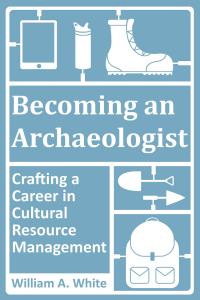 Around 1:30 AM, I knew this pain was not going to go away easily.
Around 1:30 AM, I knew this pain was not going to go away easily.
I sat up in bed, my right ear throbbing. Stabbing pain shot through the right side of my sinuses whenever I moved my cranium. Rubbing acupressure points around my ear did nothing. The pain in the right persisted and intensified over the next hour until it felt like my head was going to explode. My little head cold had turned into an ear infection. I needed medicine.
By 10:00 A.M. the next morning, my boss was helping fill out forms in the Emergency Room (ER) of the nearest hospital. Fever and chills had me shaking so badly the nurses couldn’t take my vitals. My shakes were so severe the automatic blood pressure cuff could not record my blood pressure. I was admitted and taken to a small room where I would spend the next hour and a half waiting to see a doctor. Exhaustion overtook the pain as I lay on the table. I finally fell asleep.
This was the first time I had been forced to go to an emergency room while out in the field on a cultural resource management archaeology project. I always thought I’d get sent to the ER by a snake bite or severe cut or my back would finally go out. Or, maybe, a bear attack given the fact that I’ve been doing archaeology near Glacier National Park where bear attacks are frequent. I never thought that a cold would morph into a sinus infection that would leave me susceptible to an outer ear infection (otitis externa). And, I never in one thousand years dreamed that an earache would land me in the ER in a rural hospital in the middle of nowhere; let alone take me out of a field project.
Over the last few days I have been thinking about all the times I have gotten hurt or been with someone else who got hurt in the field. Some of those times we went to the emergency room, but the co-worker was always up and running in about 48 hours in some capacity. Fortunately, I’ve never seen life threatening injuries while doing fieldwork.
This recent incident made me think about how we can try and cover all potential threats with a thoughtful health and safety plan (HASP), there is no way to cover unanticipated accidents and illnesses. Here’s what I learned from going to the ER while out in the field:
Not all hospitals are the same
I actually had to go to two different emergency rooms. The doctor I saw at the first hospital was not licensed to write prescriptions in the state where we were working, so his prescriptions had to be filled there at that hospital. The lack of proper licensure should have been a red flag but I was in extreme pain. I thought, “Even an unlicensed doctor must have gone to medical school. He would probably tell me to go to another hospital if he did not have the power to treat me.” I trusted him, filled the prescriptions, and went back to my hotel room. It was about Noon.
By 4:00 P.M., I realized something was going very, very wrong. The pain had increased dramatically and the right side of my face was getting numb. The pain surged with every heart beat and, since he did not have the capability to prescribe pain medicine, I was trying to get by with a few mg of ibuprofen.
My symptoms were only soothed after I went to an emergency room at another hospital nearly an hour away. I had been misdiagnosed at the first hospital and given the wrong medicine. My infection continued to swell. I am fortunate that the next hospital was better and had more capable staff. I was also lucky that there was an out-of-hospital pharmacy in this town where I could get the right pharmaceuticals. I only started getting better because I sought out a second opinion.
Not all hospitals are created equal. When creating health and safety plans, you will be asked to identify the nearest hospital. It is important to remember that, when working in remote locations, hospitals can vary dramatically in quality of facilities and staff. It is also good practice to identify a second hospital as backup in case your closest facility sucks.
Archaeologists must exercise compassion
The most important factor in my well-being is the fact that my boss was sincerely concerned for my welfare. She did everything she could to get me the help and medicine I needed, without questioning the severity of my illness or my decision to seek a second opinion. She trusted that I would not be asking for medical assistance without a good reason.
So many times in the past I have seen supervisors and co-workers question whether or not an illness is bad enough to warrant time away from field duties or a trip to the hospital. When somebody gets sick or hurt in the field, I’ve heard comments about how they’re just not “hard enough” or that they “don’t really want this bad enough” to “work through the pain.” This is nonsense. It is also a life-threatening mindset.
I would never have gotten better had my boss not taken it upon herself to listen to my complaints, take time out of her busy schedule, and drive me all those miles to get me to the ER. She made sure my paperwork was filed when I was too infirmed to fill it out myself. To make up those lost hours, she worked in her own hotel room until late into the night while I shivered—feverish and on antibiotics— in my room nearby.
When people tell us they’re hurt in the field, it is up to us to be compassionate enough to give them the option to get well again. It’s pretty easy to make the decision to take somebody to the hospital when they’re too feverish to work anymore or suffer a major injury like a snakebite. It is more difficult to let somebody take a sick day when their back hurts or they have a bad cold. Of course, it is up to the sick or injured person to take you up on this offer but we should give them the chance to make that decision.
Severe illness and injuries strike suddenly. We need to be flexible.
I hadn’t had an ear infection since elementary school. There was no way I could have predicted this would happen. Head colds come and go, but they rarely become so severe I seek medical attention. This ear infection is possibly the most painful sickness I have experienced as an adult. Worse than when I needed a root canal. Worse than when I had a 105-degree fever for over 3 days. Worse than when I broke my wrist doing capoeira. I was taken aback at how maddening sustained, pervasive, unrelenting pain in your head can be.
I am a big fan of health and safety plans but there is no way we can predict something like this would happen. Health and safety plans are great precautionary measures and they are very necessary. Employees also need to have the freedom and flexibility to make rational decisions when non-life threatening injuries happen, things like an ear infection that requires medical attention. It is best to have a baseline protocol for life threatening injuries outlined in the HASP so employees can be sure what to do and where to go. Illnesses and injuries that are non-life threatening fall into a grey area where you can visit a range of different healthcare facilities from urgent care offices to full-blown emergency rooms.
The ER was my only option because of where our project was located even though I knew I probably was not going to need surgery. I just needed antibiotics and pain killers. The ER was my only way to see a doctor. This was freak illness that we never could have expected. Once again, I am fortunate that my boss was flexible enough to deviate from the original HASP and visit a second hospital even though we had done what we were supposed to under the existing plan.
Have the flexibility to get well soon
As I write, my right ear continues to ooze with pus. It’s pretty gross, but I have seen general improvement since receiving the proper medicine. I hope the ringing in my ear will go away and proper hearing will return.
I would never have had a shot at getting better had it not been for the concern and trust of my supervisor. The first hospital I visited was a waste of time and money. Fortunately, the pain kept me seeking a source of relief until I found it. I am also lucky that my boss was flexible enough to go outside the safety plan, interrupt our work schedule, and keep working towards a solution even though it meant we were going to lose some time on the project.
In the end, I was able to continue working while on antibiotics and pain killers. It took longer because I had to take more breaks and was slow, but we were able to work over the weekend in order to record all the buildings at this site and conduct the archival research necessary to successfully complete the project.
There is no way to tell when a rare illness or injury will strike. It is up to cultural resource management archaeologists to listen to their employees and allow them the freedom to advocate for their own wellness. It is up to our co-workers to pay attention to our concerns and be compassionate. “Tough and dumb” is no way to do archaeology.
Have you ever gone to the Emergency Room while doing archaeological fieldwork? If so, what was your experience? Write a comment below or send me an email.
 Having trouble finding work in cultural resource management archaeology? Still blindly mailing out resumes and waiting for a response? Has your archaeology career plateaued and you don’t know what to do about it? Download a copy of the new book “Becoming an Archaeologist: Crafting a Career in Cultural Resource Management” Click here to learn more.
Having trouble finding work in cultural resource management archaeology? Still blindly mailing out resumes and waiting for a response? Has your archaeology career plateaued and you don’t know what to do about it? Download a copy of the new book “Becoming an Archaeologist: Crafting a Career in Cultural Resource Management” Click here to learn more.
Check out Succinct Research’s contribution to Blogging Archaeology. Full of amazing information about how blogging is revolutionizing archaeology publishing. For a limited time you can GRAB A COPY FOR FREE!!!! Click Here
 “Resume-Writing for Archaeologists” is now available on Amazon.com. Click Here and get detailed instructions on how you can land a job in CRM archaeology today!
“Resume-Writing for Archaeologists” is now available on Amazon.com. Click Here and get detailed instructions on how you can land a job in CRM archaeology today!
 Small Archaeology Project Management is now on the Kindle Store. Over 300 copies were sold in the first month! Click Here and see what the buzz is all about.
Small Archaeology Project Management is now on the Kindle Store. Over 300 copies were sold in the first month! Click Here and see what the buzz is all about.
Join the Succinct Research email list and receive additional information on the CRM and heritage conservation field.
Get killer information about the CRM archaeology industry and historic preservation.



